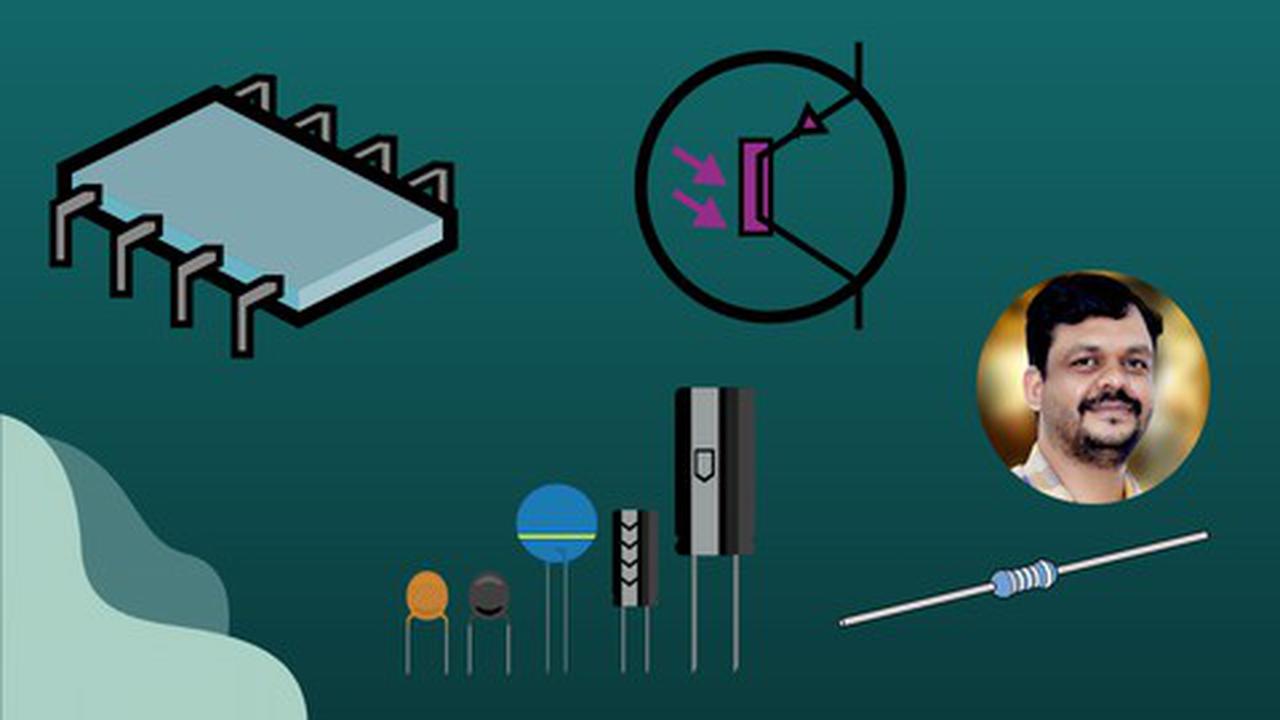Learn BJT from very basics to Advance level
The Bipolar Junction Transistor is a semiconductor device which can be used for switching or amplification
This Course deals with basics of BJT, BJT characteristic’s, BJT biasing Techniques( Fixed bias, collector to Base bias and voltage divider bias), BJT amplifiers ( CB, CE, CC amplifiers), small signal model of BJT( Hybrid model ), Feedback amplifiers, Oscillators ( RC and LC ), Multistage amplifiers and Power amplifiers.
If we now join together two individual signal diodes back-to-back, this will give us two PN-junctions connected together in series which would share a common Positve, (P) or Negative, (N) terminal. The fusion of these two diodes produces a three layer, two junction, three terminal device forming the basis of a Bipolar Junction Transistor, or BJT for short.
Transistors are three terminal active devices made from different semiconductor materials that can act as either an insulator or a conductor by the application of a small signal voltage. The transistor’s ability to change between these two states enables it to have two basic functions: “switching” (digital electronics) or “amplification” (analogue electronics). Then bipolar transistors have the ability to operate within three different regions:
Active Region – the transistor operates as an amplifier and Ic = β*Ib
Saturation – the transistor is “Fully-ON” operating as a switch and Ic = I(saturation)
Cut-off – the transistor is “Fully-OFF” operating as a switch and Ic = 0
The word Transistor is a combination of the two words Transfer Varistor which describes their mode of operation way back in their early days of electronics development. There are two basic types of bipolar transistor construction, PNP and NPN, which basically describes the physical arrangement of the P-type and N-type semiconductor materials from which they are made.
The Bipolar Transistor basic construction consists of two PN-junctions producing three connecting terminals with each terminal being given a name to identify it from the other two. These three terminals are known and labelled as the Emitter ( E ), the Base ( B ) and the Collector ( C ) respectively.
Bipolar Transistors are current regulating devices that control the amount of current flowing through them from the Emitter to the Collector terminals in proportion to the amount of biasing voltage applied to their base terminal, thus acting like a current-controlled switch. As a small current flowing into the base terminal controls a much larger collector current forming the basis of transistor action.
The principle of operation of the two transistor types PNP and NPN, is exactly the same the only difference being in their biasing and the polarity of the power supply for each type.

Learn Bipolar Junction Transistor ( BJT ) – From Basics
Learn BJT from very basics to Advance level”
Este curso se encuentra de manera gratuita gracias a un cupón que podrás encontrar aquí abajo.
Toma en cuenta que este tipo de cupones duran por muy poco tiempo.
Si el cupón ya ha expirado podrás adquirir el curso de manera habitual.
Este tipo de cupones duran muy pocas horas, e incluso solo minutos después de haber sido publicados.
Debido a una actualización de Udemy ahora solo existen 1,000 cupones disponibles, NO nos hacemos responsables si el cupón ya venció.
Para obtener el curso con su cupón usa el siguiente botón:
Deja tus comentarios y sugerencias
Sobre Facialix
Facialix es un sitio web que tiene como objetivo apoyar en el aprendizaje y educación de jóvenes y grandes. Buscando y categorizando recursos educativos gratuitos de internet, de esta manera Facialix ayuda en el constante aprendizaje de todos.


